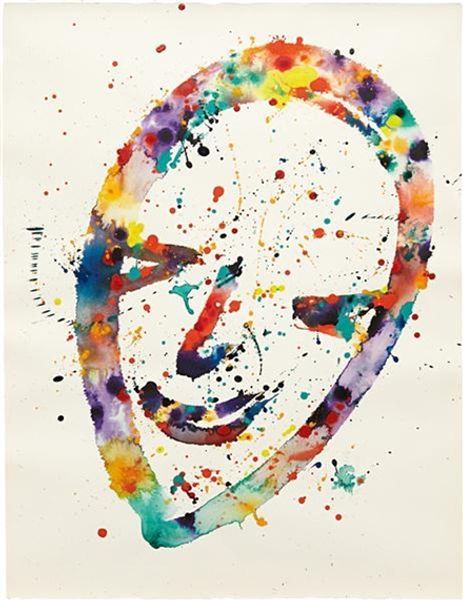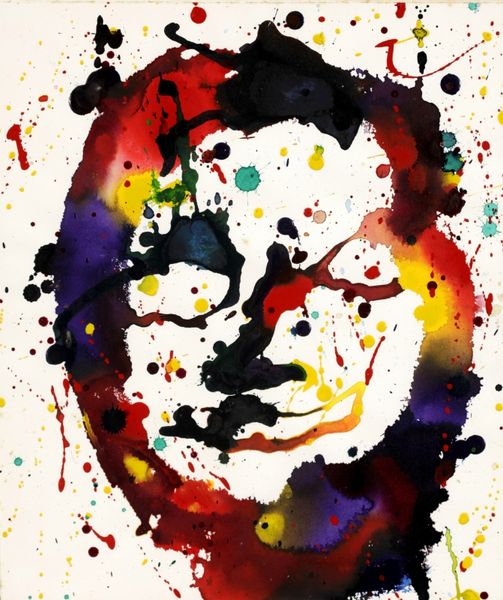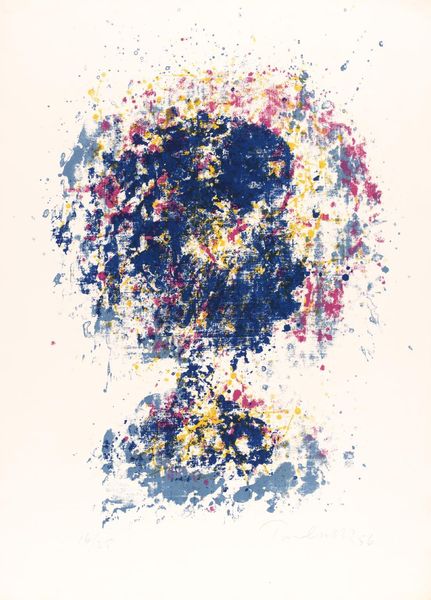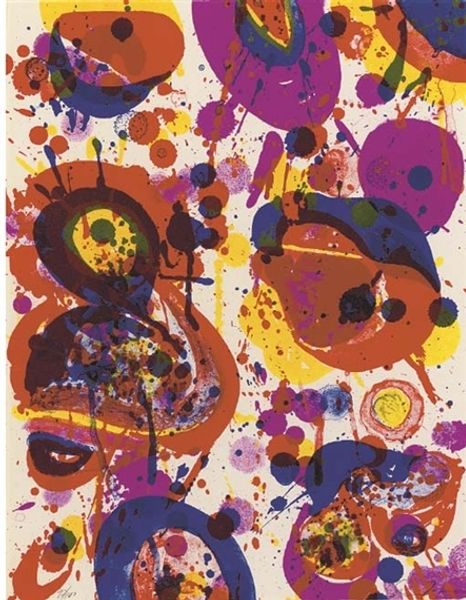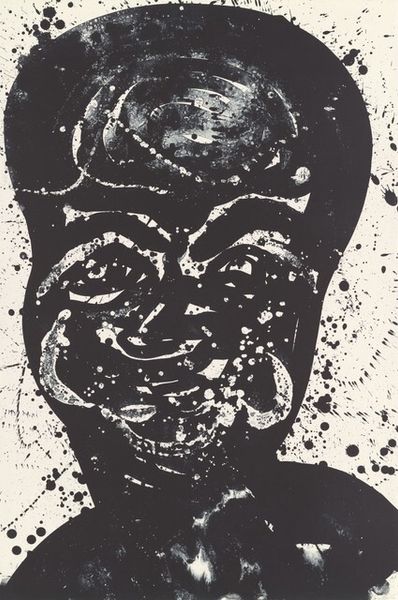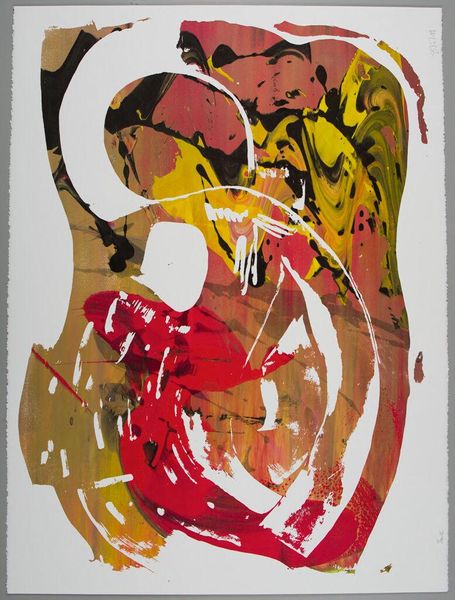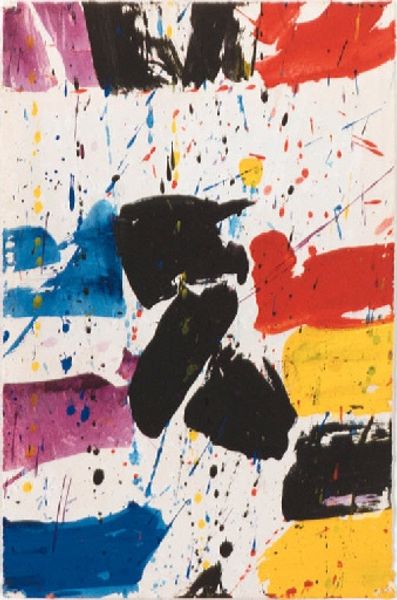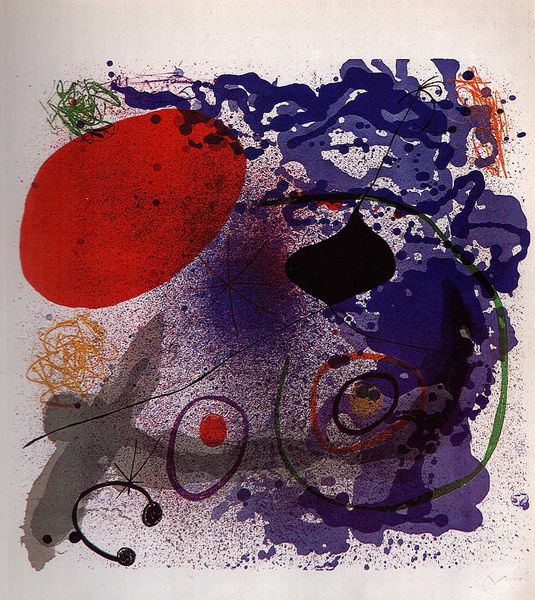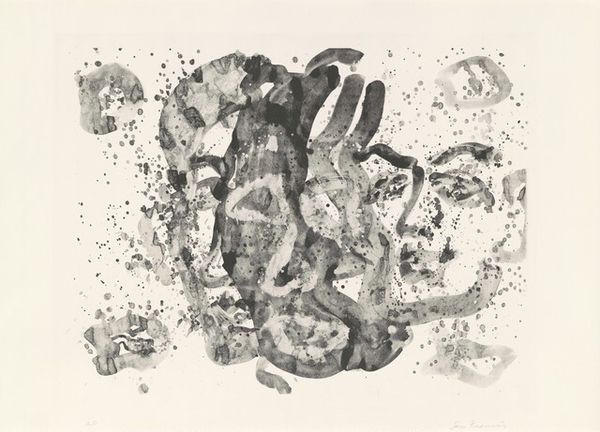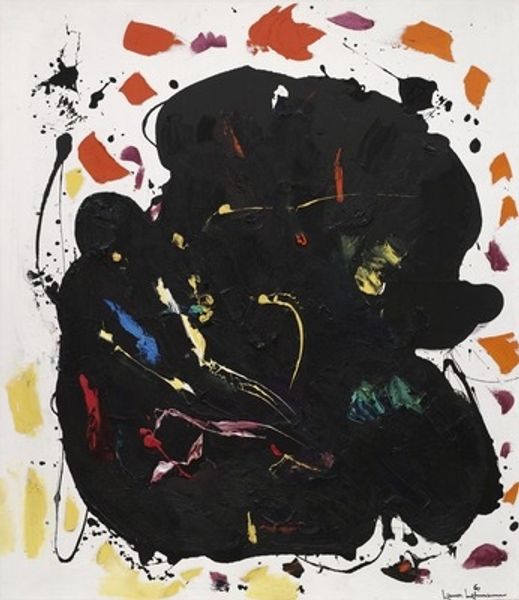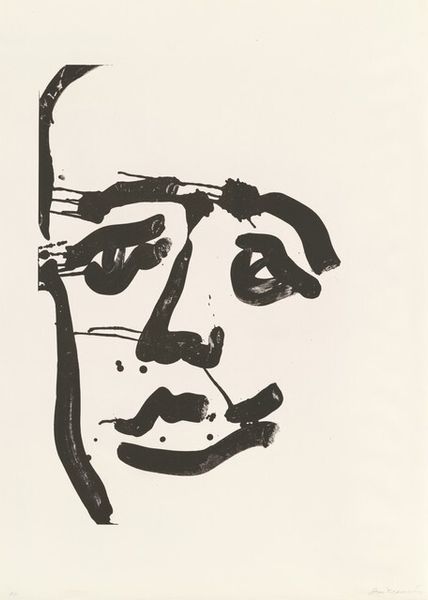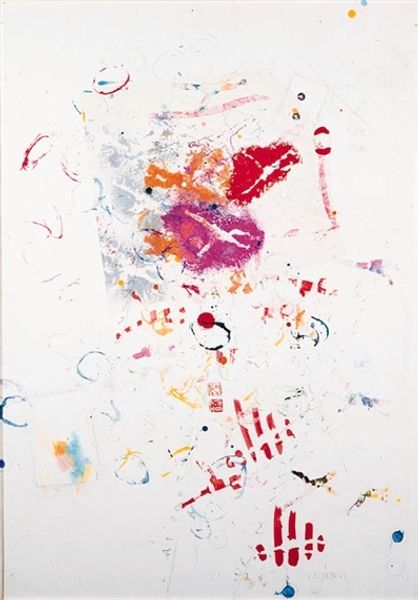
Copyright: 2012 Sam Francis Foundation, California / Artists Rights Society (ARS), NY
Editor: This is Sam Francis's "Self Portrait (SF74-142)" from 1974, done with watercolor and acrylic paint. The image is striking because of the colors against the stark white background and that face shape somehow emerges from the apparent chaos. How would you approach interpreting this work? Curator: This self-portrait compels us to think about Francis's artistic process. The materiality of watercolor and acrylic—their fluidity, their tendency to drip and bleed—directly shapes the image we see. What can this tell us about his labor, and the cultural context of his work at that time? Editor: I see your point. It’s not just *what* he’s painting, but *how* he's painting it. I suppose I was mostly looking for something deeper beyond the surface. Curator: Deeper, perhaps, lies in considering the consumption of art. Abstract Expressionism was embraced by the elite as a symbol of freedom. Yet the artist is always implicated in those structures, even by challenging them. This challenges the art world to rethink about those perceived "freedoms". Editor: So, is Francis making a statement about artistic freedom, or questioning the materials, or both? Is there any labor element implied as part of this art piece? Curator: Perhaps he is prompting a questioning of all of those aspects through the work, highlighting the interplay of the artistic impulse and its inherent limits or considerations that are material or social. The fast application could mean he quickly developed the painting or instead suggests the intensive process with more considerations in play that we are seeing here. Editor: I never considered the speed or intent of application for process. This has offered a different perspective, thinking about not just the aesthetic but the means of its production and labor. Curator: Indeed. By examining the work through the lens of material, process, and context, we uncover deeper meaning.
Comments
No comments
Be the first to comment and join the conversation on the ultimate creative platform.
